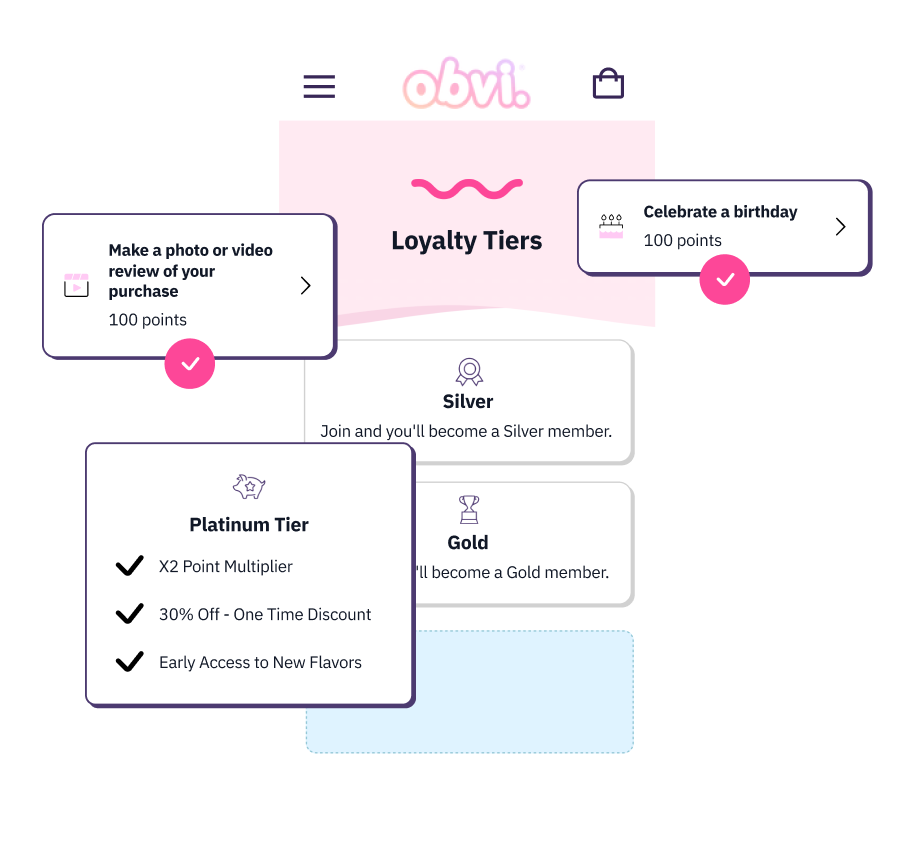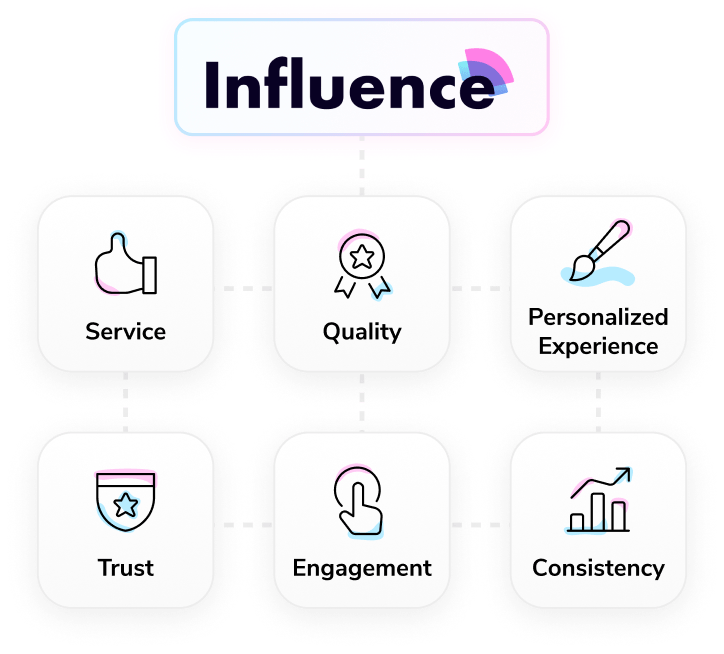Discover the 5 types of eCommerce customers and how to tailor your loyalty program to meet their needs. Learn strategies to enhance engagement and boost retention.

Online shopping has transformed how people buy - some treat it as a hobby, while others approach it with laser focus. For eCommerce brands, the challenge is catering to different types of customers in an era of short attention spans.
Success depends on knowing your audience. Today’s shoppers expect personalized experiences, and by segmenting customers into clear groups, you can tailor loyalty rewards and messaging to keep them engaged, increase conversions, and build long-term growth.
To succeed in eCommerce, it's essential to have an understanding of your target audience. Today's consumers expect a personalized and tailored buying experience. By directing your messaging and website offerings to specific customer types, you can create a deeper connection between them and your products and brand.
Whether your website is thriving or struggling to reach your ideal customers, incorporating knowledge about your shop-visitors into your eCommerce strategy is crucial. It will help your online efforts, resulting in increased traffic, higher conversions, customer-driven product development, and growth opportunities.
Some customers enjoy browsing before buying, while others have a focused approach with a set shopping list. As a retailer, you cannot rely on one type of customer. Each shopper has different buying patterns and priorities.
Just like you, as a retailer, have your own pattern when choosing products to sell. Common categories of eCommerce customers are also relevant for your loyalty program. You need to find out how to cater to each type to increase conversions in your business.
Every shopper has different motivations and buying habits, and no single loyalty approach will engage them all. By understanding these customer types, you can tailor rewards and communication to meet their needs and encourage repeat purchases.
These shoppers compare prices and often switch brands for better deals. Loyalty programs can win them over by showing clear savings.
Offer tiered rewards so the more they spend, the bigger the discount or cashback.

Highlight “points saved” on receipts or in emails so the value feels tangible. Price-driven customers will keep returning if they know they’re maximizing value.
These customers prioritize speed, ease, and a smooth shopping journey. They’re loyal to brands that remove friction.
Loyalty perks like free shipping, one-click checkout, or early access to sales keep them engaged.
Bonus points for actions like auto-replenishment subscriptions also appeal to convenience-first shoppers who value time over price.
This group values memorable interactions over discounts. They want personalized rewards, unique events, or behind-the-scenes access.
A loyalty program can cater to them with experiential perks like exclusive webinars, VIP events, or surprise-and-delight rewards.
These shoppers often share experiences online, so rewarding them can also generate user-generated content and brand advocacy.
These customers already love your brand and identify with it. To deepen loyalty, reward them with benefits that reinforce exclusivity, like early product launches, personalized recommendations, or branded merchandise.
Loyalty tiers work especially well here, giving them a sense of status and recognition. Brand-loyal customers are also your strongest advocates, so consider rewarding them for referrals and reviews.
Impulse buyers thrive on urgency and excitement. They respond to limited-time rewards, flash point bonuses, or surprise offers.
A loyalty program can keep them engaged by highlighting “redeem now” perks or double-points weekends. Encouraging fast decision-making not only drives repeat sales but helps turn impulse habits into longer-term loyalty.
Knowing your customer segments is only the starting point. To truly increase loyalty and retention, your brand needs to focus on the fundamentals that turn one-time shoppers into long-term advocates:

We’ve highlighted how important it is for eCommerce businesses to understand the different types of customers they serve in order to build loyalty. Incorporating buyer personas into your strategy helps you optimize marketing efforts, improve product development, and drive growth.
Loyalty programs with targeted rewards for each customer type keep shoppers engaged and coming back. Combined with excellent service, personalization, and consistency, this approach helps brands turn one-time buyers into long-term advocates.
By putting in the effort to understand and serve customers, eCommerce businesses can increase satisfaction, boost retention, and create sustainable growth.
Ready to build a loyalty program that works for every customer type? Get started with Influence today.
The most common groups are price-sensitive customers, convenience-oriented customers, experience-seekers, brand-loyal customers, and impulse buyers. Each group has unique motivations and buying habits.
By tailoring rewards to each customer type. For example, discounts appeal to price-sensitive shoppers, while VIP access and unique experiences resonate with brand-loyal or experience-driven customers.
Segmentation helps businesses understand buying behaviors and deliver more personalized offers. This leads to stronger engagement, higher conversions, and improved customer retention.
Limited-time promotions, bonus points, or surprise offers work well. These create urgency and encourage impulse buyers to act quickly while reinforcing repeat behavior.
They provide consistent value, personalize the customer experience, and create recognition for ongoing engagement. Over time, this strengthens trust and encourages repeat purchases.